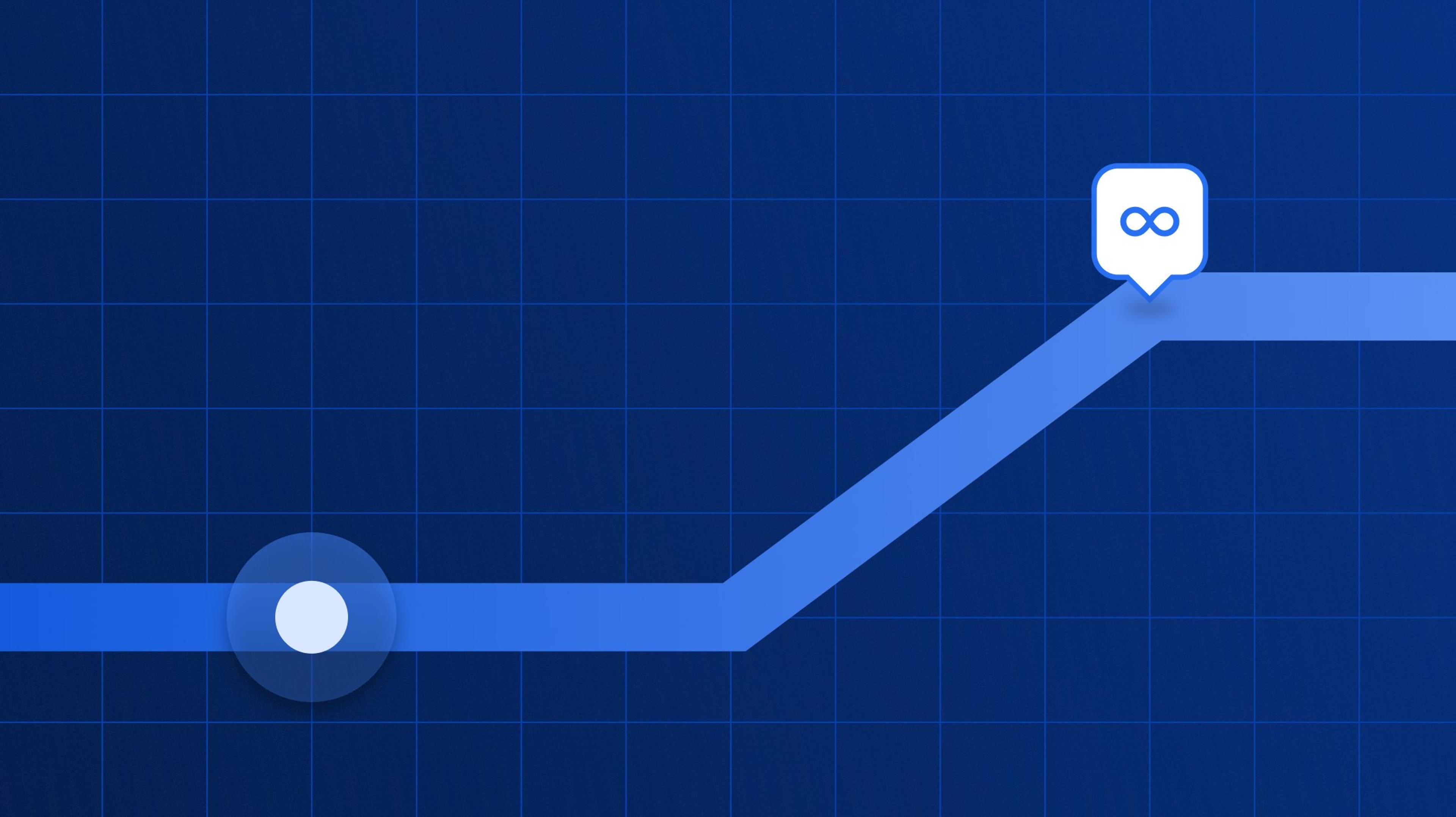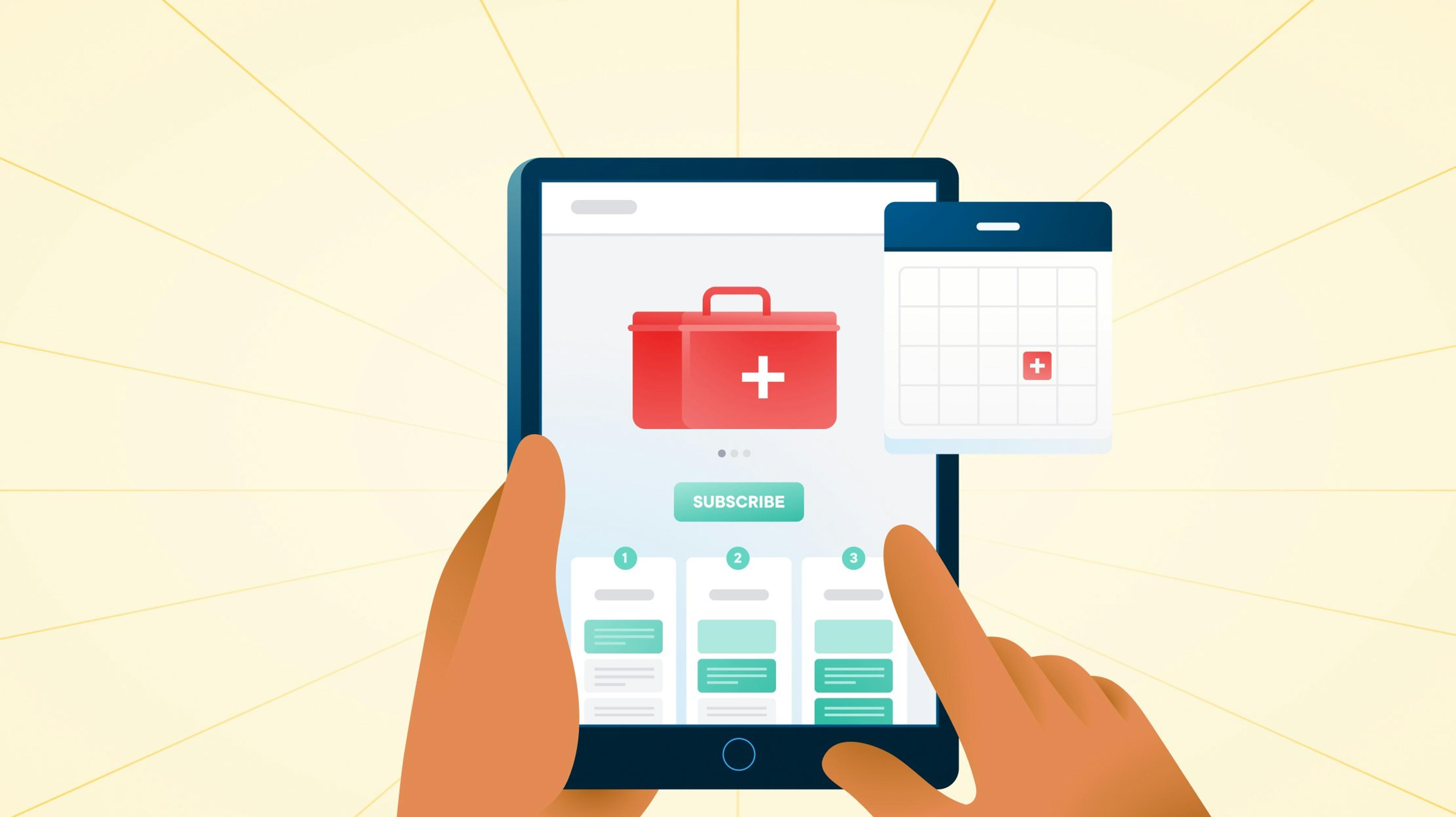Onfleet vs. Bringg: A Comparison for Drivers and Dispatchers in 2025

If you’re searching for Onfleet vs Bringg, chances are you’re evaluating last mile delivery management software for your business or courier service. Both platforms can plan routes at the click of a button, automate dispatching, and track drivers in real-time—but they cater to different business needs.
The truth is, there’s no one-size-fits-all solution. Your decision depends on what type of business you run, how many drivers in your team, how many stops you complete each month, whether you need advanced integrations, how much control vs automation you prefer, and many other factors.
To help you make an informed choice, we analyzed:
✅ User reviews from Capterra, G2, and Trustpilot
✅ Feature breakdowns from Onfleet and Bringg’s official documentation
✅ Insights from real last mile businesses that switched from Onfleet or Bringg (via Intercom conversations with our team)
So who is this guide for?
- Business owners & logistics managers looking for a last mile delivery system
- Enterprise-level delivery teams evaluating scalability and API integrations
- Courier companies deciding if either platform offers the control and flexibility they need to manage their last mile operation
We’ll break down the key differences, strengths, and weaknesses of Onfleet and Bringg—then introduce an alternative built specifically for courier companies.
Let’s get started.
How do users rate each app?
First, let’s look at the scores we compiled from top technology review sites like Capterra and G2. They’re directly scored by the users of the app, which gives us a pretty accurate reflection of their performance. While this comparison focuses on Onfleet vs Bringg, we’ve also included Circuit for Teams to help courier businesses see how it stacks up.
| SOURCE | BRINGG | ONFLEET | CIRCUIT |
|---|---|---|---|
| G2 overall rating: | 4.6 | 4.6 | 5.0 |
| Capterra ease of use rating: | 4.8 | 4.6 | 4.8 |
| Capterra value for money rating: | 4.6 | 4.5 | 4.6 |
| Capterra customer service rating: | 4.3 | 4.6 | 4.7 |
| Capterra overall rating: | 4.8 | 4.6 | 4.8 |
Key Differences Between Onfleet & Bringg
When comparing Onfleet vs Bringg, the key question isn’t which platform is "better"—it’s which one is the right fit for your specific business needs. While both solutions offer route optimization, proof of delivery, and driver tracking, they serve very different types of delivery operations.
Who is Onfleet For?
Onfleet: Best for Small-to-Mid-Sized Local Delivery Businesses

Onfleet is a well-established delivery management software, primarily catering to local couriers, startups, and mid-sized businesses that need a user-friendly, plug-and-play system.
Its branded notifications and detailed analytics provide the visibility and professionalism large businesses expect while its easy-to-use interface makes adoption very straightforward.
Strengths:
✅ Simple, intuitive platform that requires minimal onboarding
✅ Strong real-time tracking & automated dispatching for last mile couriers
✅ Ideal for businesses making high-volume, same-day deliveries
Limitations:
❌ Lacks deep customization & industry-specific workflows
❌ Not built for complex logistics (e.g., white-glove services, multi-fleet scaling)
💡 Best for: On-demand delivery services, local couriers, food & beverage, and retailers with in-house fleets.
Who is Bringg For?
Bringg: Designed for Large Enterprises & eCommerce Brands

Bringg is not just delivery management software—it’s an enterprise-grade logistics orchestration platform. It’s built for scaling, third-party fleet partnerships, and deep system integrations with existing supply chain infrastructure.
Bringg caters to industries with more complex needs. For example, those offering white-glove delivery—where delivery may include installation or unpacking the item—can schedule ‘time-on-site’ into their driver’s delivery route.
Users can also use ‘just-in-time dispatching’ and calculate delivery slots based on their fleet's immediate availability. There’s also a Delivery Hub, where companies get access to over 200 carriers. It’s perfect for scaling your fleet as and when you need it.
Strengths:
✅ Highly customizable, API-driven platform with flexible integrations
✅ Built-in partnerships with 200+ third-party carriers for hybrid fleet management
✅ Supports white-glove delivery workflows (e.g., installations, scheduled services)
Limitations:
❌ Steeper learning curve & complexity for smaller businesses
❌ Pricing is not transparent and requires direct sales engagement
💡 Best for: Enterprises, retailers with complex supply chains, logistics providers needing multi-fleet orchestration, and businesses offering premium white-glove delivery services.
Onfleet vs Bringg: A Side-by-Side Feature Comparison
Choosing between Onfleet and Bringg comes down to the features that matter most to your last mile operation. Below, we’ve broken down their key capabilities—covering route optimization, proof of delivery, live tracking, API integrations, and pricing transparency—so you can see how they compare at a glance.
| FEATURE | ONFLEET | BRINGG | CIRCUIT FOR TEAMS (CFT) |
|---|---|---|---|
| Advanced Route Optimization | ✅ Available in all plans; advanced features in Scale and Enterprise plans. | ✅ Offers advanced route optimization capabilities. | ✅ Provides advanced route optimization tailored for courier services. |
| Unlimited Routes | ✅ All plans include unlimited users and routes. | ❓ Information not publicly available. | ✅ Allows creation of unlimited routes. |
| Route Spreadsheet Upload | ✅ Supports bulk import of tasks via CSV. | ❓ Information not publicly available. | ✅ Supports CSV upload for bulk route planning. |
| Client Portal | ✅ Offers a client portal for real-time tracking and management. | ✅ Provides a customer portal with checkout experience services. | ✅ Offers a client portal for real-time tracking and management. |
| Interactive GPS Map and Timeline Route Views | ✅ Features interactive maps and timeline views for routes. | ✅ Includes interactive mapping features. | ✅ Offers interactive map views for routes. |
| Live Route Tracking and Updates | ✅ Provides real-time tracking and updates. | ✅ Offers live tracking capabilities. | ✅ Real-time tracking available. |
| Customizable Time Windows and Stop Types | ✅ Allows customization of delivery time windows and stop types. | ❓ Information not publicly available. | ✅ Supports customizable time windows and stop types. |
| Manage Multiple Depots | ✅ Supports management of multiple depots. | ❓ Information not publicly available. | ✅ Allows management of multiple depots. |
| Create Delivery Zones | ✅ Enables creation of specific delivery zones. | ❓ Information not publicly available. | ✅ Facilitates creation of delivery zones. |
| Barcode Scanning | ✅ Available in Scale and Enterprise plans. | ✅ Supports barcode scanning. | ✅ Yes |
| Delivery Analytics | ✅ Provides analytics with varying historical data retention based on plan. | ✅ Offers delivery analytics features. | ✅ Includes delivery analytics. |
| Bulk Copy and Move Stops Between Routes | ✅ Supports bulk editing of stops between routes. | ❓ Information not publicly available. | ✅ Allows bulk management of stops. |
| Dispatcher and Driver Notes | ✅ Facilitates notes between dispatchers and drivers. | ✅ Supports dispatcher and driver notes. | ✅ Enables notes between dispatchers and drivers. |
| Global Account Search | ✅ Features global search functionality. | ❓ Information not publicly available. | ✅ Provides global account search. |
| SMS and Email Recipient Notifications | ✅ Offers SMS and email notifications. | ✅ Provides recipient notifications via SMS and email. | ✅ Supports SMS and email notifications. |
| Dynamic Tracking Visibility | ✅ Provides dynamic tracking links for recipients. | ✅ Offers dynamic tracking visibility. | ✅ Enables dynamic tracking for recipients. |
| Signature, Photo, and 'Safe Place' Proof of Delivery | ✅ Captures signatures and photos; 'safe place' options available. | ✅ Supports various proof of delivery methods. | ✅ Offers signature and photo proof of delivery. |
| Forced PoD for Certain Stops | ✅ Allows mandatory proof of delivery for specified stops. | ❓ Information not publicly available. | ✅ Enables forced proof of delivery for designated stops. |
| Set Certain Permissions for Drivers and Dispatchers | ✅ Offers role-based access controls. | ✅ Provides configurable permissions for users. | ✅ Supports setting specific permissions. |
| Multi-Carrier Management | ❌ Not available. | ✅ Supports management of multiple carriers. | ❌ Not available. |
| Returns Management | ❌ Not available. | ✅ Offers returns management features. | ❌ Not available. |
| Read/Write API | ✅ Provides comprehensive API access. | ✅ Offers extensive API capabilities. | ✅ Provides read/write API access. |
| Webhook API | ✅ Supports webhooks for real-time updates. | ✅ Offers webhook functionalities. | ✅ Supports webhook API. |
| Shopify Integration | ✅ Available via integration partners. | ✅ Offers Shopify integration. | ✅ Provides Shopify integration. |
Route Optimization & Delivery Planning
What Onfleet Offers

- AI-Powered Route Optimization: Uses machine learning to optimize delivery routes.
- Optimizes based on constraints: It considers delivery times, driver schedules, vehicle sizes, and traffic history
- Live route edits: Routes can also be quickly edited and re-optimized when plans change
- Auto-Dispatch: Assigns deliveries to drivers based on availability and location.
- Driver Tracking: Monitors driver locations in real-time.
What Bringg Offers
- Bringg Road: Bringg's 'Road', powered by Here® technology, optimizes routes by considering real-time and historical traffic data, toll costs, vehicle sizes, package weights, and driver skills
- Customizable route settings: such as limiting the number of stops based on vehicle capacity
- Automatic route assignment: Dynamically assigns new orders to drivers (similar to Onfleet's auto-dispatch feature)
- Dynamic Fleet Routing: Adjusts routes in real-time based on traffic and delivery windows.
- Multi-Fleet & Hybrid Delivery Models: Supports third-party carrier and in-house fleet integration.
Verdict: Onfleet is better for small to mid-sized last-mile businesses that want simple, automated route planning. Bringg is better for scaling enterprises with multiple fleet types that need adaptive routing.
Proof of Delivery (POD) & Customer Notifications
What Onfleet Offers
- Photo & Signature Capture: Proof of delivery with digital signatures and photo documentation.
- Barcode Scanning: Available on premium plans for secure package verification.
- Automated Customer Notifications: SMS and email updates with tracking links.
- ‘Safe Place’ Deliveries: Allows recipients to specify a secure drop-off location.
- Branded tracking pages: to keep customers informed at every step of the delivery process with you or your retailer client’s branding
What Bringg Offers
- Customizable Proof of Delivery Workflows: Lets businesses define their own PoD process.
- Real-Time Status Updates: Sends live tracking updates to customers.
- Flexible Data Capture: Configure what proof of delivery elements are required.
- Barcode Scanning for Inventory & PoD: Used for tracking packages from warehouse to delivery and verifying deliveries at the drop-off point.
- Flexible Notifications: can be sent via SMS or email
- CSAT component: option for customers to leave ratings and feedback
Verdict: Onfleet has simpler PoD and customer notifications which is great for small businesses, while Bringg offers more advanced PoD customization and inventory tracking.
Live Driver Tracking & Real-Time Notifications
What Onfleet Offers
- Live GPS Tracking: Customers and dispatchers can track drivers in real-time.
- Geofencing Alerts: Dispatchers are notified when drivers enter/exit designated areas.
- ETA Notifications: Customers receive SMS and email alerts with estimated delivery times.
What Bringg Offers
- Advanced Fleet Tracking: Manages real-time tracking across 250+ third-party carriers.
- Automated ETA Adjustments: Uses live traffic and where the driver is on their route to update estimated delivery times.
- Hybrid Fleet Management Capabilities: Manages both in-house and outsourced fleets.
Verdict: Onfleet is great for companies that own and manage their own fleet, while Bringg excels for businesses needing to outsource to a hybrid fleet but still manage tracking.
Integrations & API Flexibility
What Onfleet Offers
- Zapier & Shopify Integrations: Easy connections for eCommerce businesses.
- API Access: Allows logistics software integration to a TMS.
- Designed for Quick Setup: No deep technical expertise required.
What Bringg Offers
- Enterprise-Level API Integrations: Connects with TMS, ERPs, WMS, and supply chain tools.
- Comprehensive API Customization: Allows for deep workflow automation which enhances efficiency for large-scale logistics.
- Integrated ecosystem of partners: connecting carriers, technology providers, software implementers, and change management specialists.
Verdict: Onfleet wins for businesses that want quick, plug-and-play integrations with Shopify and Zapier. Bringg is better for enterprises requiring full-scale logistics system integration.
Pricing & Cost Transparency
What Onfleet Offers
- Transparent Pricing: Publicly available pricing based on the number of deliveries.
- Feature Tiers: Some premium features require higher-tier plans.

Onfleet offers a three-tiered pricing model designed to cater to different business sizes and delivery volumes.
The Launch Plan starts at $599/month, including 2,500 delivery tasks, unlimited users, route optimization, and proof of delivery features.
The Scale Plan, at $1,299/month, increases the limit to 5,000 tasks and introduces barcode scanning, ID verification, advanced route optimization, and auto-dispatch.
For larger operations, the Enterprise Plan starts at $2,999/month, supporting 10,000+ tasks, multi-brand and multi-region management, and advanced customization options.
Onfleet’s pricing jumps significantly between tiers, so businesses with fluctuating delivery volumes should consider potential overage fees if they exceed their allocated task limits. A 14-day free trial is available for Launch and Scale plans.
What Bringg Offers
- Custom Enterprise Pricing: No public pricing, requires contacting sales.
- Negotiable Features & Costs: Some features may be included or excluded based on contracts.
Verdict: Onfleet wins for clear, upfront pricing, while Bringg’s custom pricing model is best for enterprises with large-scale needs.
Onfleet vs Bringg: Who Should Choose Which? Decision-Making Guide
Without sounding like a broken record, the best choice depends on your delivery model, operational complexity, and scalability requirements. Below, we break down which platform is best suited for different types of businesses.
Choose Onfleet if…
✅ You want a user-friendly, out-of-the-box last mile management solution – Onfleet is designed for ease of use, making it a great fit for small to mid-sized delivery teams that need to get up and running quickly without complex onboarding.
✅ Your team needs an intuitive mobile app with features built for the last mile – Onfleet’s driver app provides real-time tracking, driver-dispatcher chat, and proof of delivery (PoD) features in a straightforward interface that drivers and dispatchers can learn fast.
✅ You prioritize transparent, predictable pricing – With three published pricing tiers, businesses can easily budget for Onfleet’s costs, while Bringg’s pricing requires a sales consultation and varies based on business needs.
✅ You operate a single-fleet model – Onfleet works best for companies that own and manage their own fleet, rather than relying on third-party carriers.
Choose Bringg if…
✅ You need enterprise-grade logistics software – Bringg is built for large-scale businesses that manage both in-house and third-party fleets, offering extensive fleet orchestration and multi-carrier management.
✅ Your business requires deep API flexibility and automation – Bringg integrates with ERPs, WMS, Salesforce, and major third-party carriers. It’s an ideal fit for companies that need custom workflows, automated routing, and advanced inventory tracking.
✅ You run a hybrid or white-glove delivery model – If you operate a complex supply chain, Bringg supports high-touch delivery services, inventory tracking, and barcode scanning across warehouses, delivery hubs, and customers.
✅ You scale across multiple regions or brands – Bringg’s multi-brand and multi-region support makes it a strong contender for businesses expanding globally and needing centralized control.
Onfleet vs Bringg: Final Thoughts
If you need a simple, intuitive last-mile management platform with transparent pricing, Onfleet is the better choice. If you’re a large-scale business that requires enterprise-level automation, integrations, and third-party fleet management, Bringg is the stronger option.
Understanding your business model and scalability needs will help determine which platform is the best fit.
Circuit for Teams: The Best Solution for Last Mile Couriers
If you're running a last mile courier company with a team of 5+ drivers and over 5,000 stops per month, you need last mile management software built specifically for couriers—not retailers, food delivery services, or general logistics companies. Something built for the way courier companies work. That’s where Circuit for Teams (CFT) comes in.
Unlike Onfleet and Bringg, which serve a wide range of delivery models, Circuit for Teams is purpose-built for last-mile courier operations—designed to be your command center for managing drivers, optimizing routes, and ensuring full package visibility from pickup to final delivery.
Total Control & Flexibility for Courier Teams
Couriers don’t operate in a one-size-fits-all world. Some drivers prefer manually adjusting their optimized routes, while others want full automation. Some businesses need delivery zones to assign jobs dynamically, while others need barcode scanning for total package visibility. CFT gives courier companies the ability to run their last-mile operation, their way.
With CFT’s intuitive dispatcher dashboard and driver app, everything stays synced in real time—making it the easiest, most reliable courier software on the market.
The Most Advanced & Easy-to-Use Route Optimization
CFT isn’t just about getting from A to B—it’s about intelligently optimizing every aspect of last mile route planning.

- Geographical Delivery Zones – Automatically assign stops based on driver location.
- Bulk Edit, Copy and Paste or or Move Stops – Make live route adjustments without disrupting deliveries. CFT will re-optimize based on your preferences.
- Drivers’ Preferred Navigation Apps – Drivers can use Google Maps straight from within the CFT driver app.
- Interactive GPS Map & Timeline Views – Dispatchers get real-time visibility into routes with clear, on-screen timelines.
- Live Route Editing – Make on-the-fly changes to routes as delivery conditions change.
- Set Stop Limits Per Driver – Assign stops based on vehicle capacity to avoid overload.
- Manual Stop Ordering – Give certain drivers the ability to customize their stop sequence when needed.
Full Visibility for Clients with the Client Portal
Tired of constant back-and-forth emails with clients? With CFT’s Client Portal, your retailer customers can:
- Upload stops directly to the system to avoid annoying emails and manual entry
- Track deliveries live, eliminating the need for phone calls asking, “How’s this order doing?”
- Gain full transparency over their deliveries, reducing service queries.
This self-serve solution means less admin work for dispatchers and more autonomy for clients—while still keeping everything inside one platform.
Barcode Scanning & Full Package Visibility
With CFT’s barcode scanning and tracking, you can monitor packages throughout the entire last mile journey.
- Allow drivers to create their own routes by scanning packages at the depot
- Scan items at pickup, transfer points, and delivery for total transparency.
- Use barcode scanning for Proof of Delivery (PoD) to verify drop-offs.
- Track every package in real time, so nothing goes missing in transit.
Proof of Delivery That’s Built for Couriers
Your drivers handle time-sensitive, high-value deliveries—so reliable Proof of Delivery (PoD) is essential. CFT gives you full control over how and when PoD is required:

- Capture Signatures & Photos – Digital PoD for every delivery and pickups.
- Safe Place Instructions – Customers can specify where to leave packages securely.
- Forced PoD for Certain Stops – Dispatchers can set mandatory proof of delivery for high-priority packages.
CFT’s ease-of-use when it comes to PoD has been highlighted many times by our customers, including this review on Capterra below.

Source: Capterra
Branded Tracking Links & Dynamic Notifications
Unlike generic delivery software, CFT lets couriers brand their customer experience.

- Branded tracking links – Keep your company’s logo front and center.
- SMS & Email Notifications – Choose one, or both, for customer alerts.
- Dynamic Delivery Windows – Send real-time updates based on driver location.
Two-Way API for Seamless Integration
CFT’s two-way API ensures effortless integration with existing courier software, ERPs, and order management systems, including Transportation Management Systems (TMS). Whether you're a courier business looking to streamline operations or need a fast and easy connection to your existing tech stack, CFT makes integration simple.
- Sync Data in Real Time – Automatically send and receive stop details, driver locations, and delivery updates from other software.
- Flexible & Developer-Friendly – Built to integrate seamlessly with warehouse, inventory, dispatch tools, and TMS platforms.
- Quick Setup – Get started without needing months of development time.
- Shopify & Zapier Integrations – While CFT is primarily built for couriers, businesses with eCommerce needs can still connect Shopify and automate workflows via Zapier.
Transparent Per-Stop Pricing—Not Per-Task Fees
Unlike Onfleet, which charges per task (pickups + drop-offs), Circuit for Teams uses per-stop pricing—making it the most cost-effective model for high-volume courier companies.
- No hidden fees—pay only for the stops you complete.
- Scales with your business—whether you’re handling 5,000 or 50,000 deliveries per month.
- Designed for efficiency—so you save on operational costs while maximizing profits.





